Penitente Canyon Recreation Area
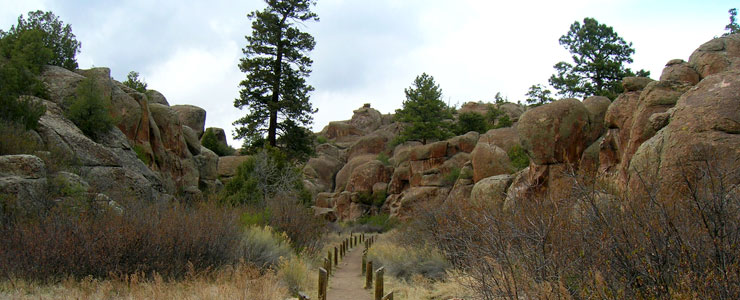
At the entrance to Penitente Canyon
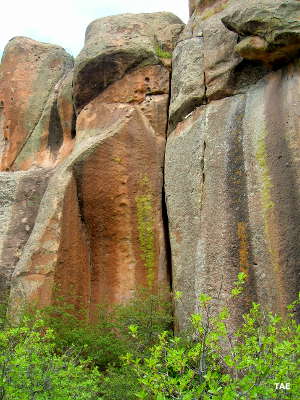
Technically, Penitente Canyon is on BLM property at the edge of Rio Grande National Forest. In reality, the property is managed in conjunction with the National Forest. Penitente Canyon is beckoning to any and all rock climbers/boulderers who are looking for a world-class site with more than 300 proven routes to practice and hone their craft on.
The name comes from the Penitente Brotherhood (Los Hermanos Penitente). They were Spanish and Indian men of deep faith and commitment who were trying to live in this area without the blessings of a priesthood that had mostly been deported by the government of Mexico in the early 1800's. Los Hermanos gravitated to the lesser traveled areas at the edge of "civilization" in order to practice their religion and live their culture freely. One of their symbols is the six-directional cross (attributed to the Indian influence on Catholic rituals and symbology). Deep in Penitente Canyon, you'll come to a vertical wall with a painting of the Virgin Guadalupe with the words "Consuelo y Espiritu" (Comfort and Courage) inscribed around her. The artwork was painted sometime between 1940 and 1980 by three local Hispanic men. Two of them left their signatures near the foot of the Virgin. While there are no other obvious indicators of their presence in the canyon, the descendants of Los Hermanos still inhabit the area and are said to still visit the canyon regularly. In other areas of Penitente Canyon you'll come across petroglyphs left by Native Americans who used this area for hundreds of years during the summer as hunting grounds (until the Hispanic and Anglo Americans came, no one lived in the San Luis Valley year-round).
The 7,529-acre Penitente Canyon Special Recreation Management Area includes Penitente, Sidewinder, Rock Garden and Witches Canyons in addition to large areas atop the mesa the canyons are eroded into. The photos on this page were taken during a walk in early May along the bottom of Penitente Canyon and then up the canyon wall on the Rock Garden Trail. During that walk, I only came across two people in the canyon and they were slowly making their way up one of the rock faces in the rear of the main canyon.
There is a moratorium in place forbidding the placement of new hardware in the rock: there's a lot of hardware in place already. This canyon has seen so much usage by folks learning and practicing their climbing skills that you'll see plenty of damage in those areas that see the most traffic. If something looks like you can climb it, it has already been climbed. At this point in time, the most popular routes are becoming "greasy" from all the traffic. As this rock is basically volcanic tuff, fresh routes tend to be "sticky" and easier (and safer) to climb. That said, weekends on this property can be pretty crowded.
The most vertical faces are on the reddish-colored rock on the north side of the canyon. That color and "verticality" are products of the level of direct sun exposure. The rocks on the south face of the canyon tend to be more gray and more rounded with a more gentle slope to them.
Volunteers helped to install the barriers at the entrance of the canyon (to keep motorized vehicles out) and worked to designate parking areas, trails and campsites. The BLM also built a permanent restroom facility at the parking area and installed an informational kiosk and interpretive signage. Penitente Canyon is now officially a "fee area" and non-payment often results in $50 citations.
To get there: I went north out of Monte Vista for 18 miles on US Highway 285. At County Road G there was a sign for the canyon. I turned left and went northwest, following the signs. Just past the La Garita store there''s a fork in the road: go left and follow the signs to the parking area. Coming south from Saguache, follow US Highway 285 to a prominent sign on the west side of the road. Take the right and follow the signs for La Garita. Penitente Canyon is just south of La Garita, just follow the signs.
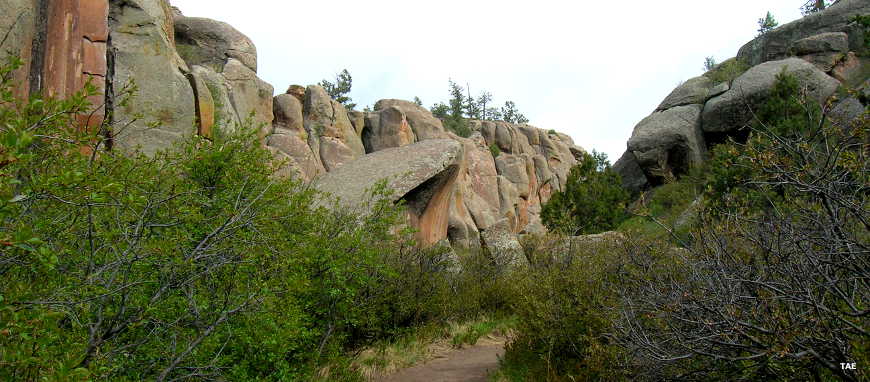
Deep in Penitente Canyon
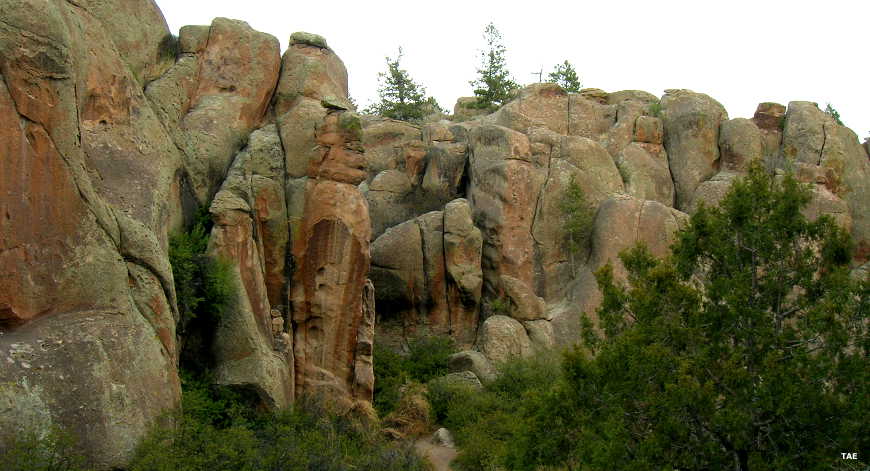
Notice the coloration in the rhyolite: evidence of geological pressure when the rocks were first formed
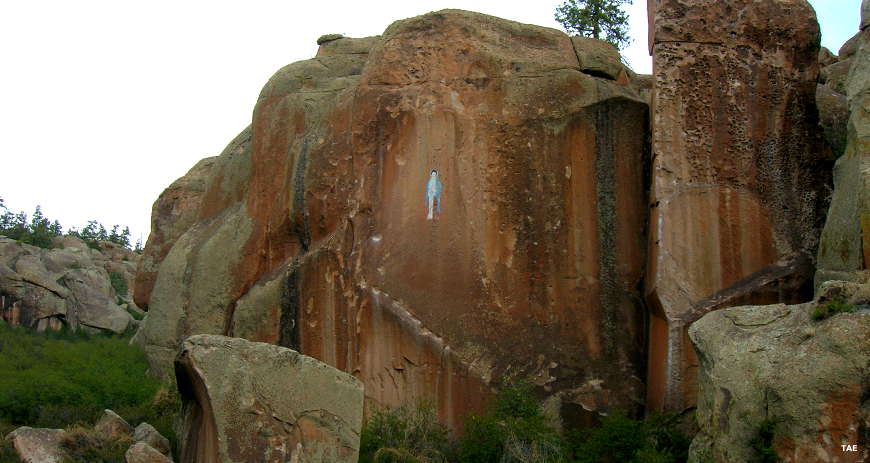
Painting of the "Virgin Guadalupe" on a rock face deep in the canyon
